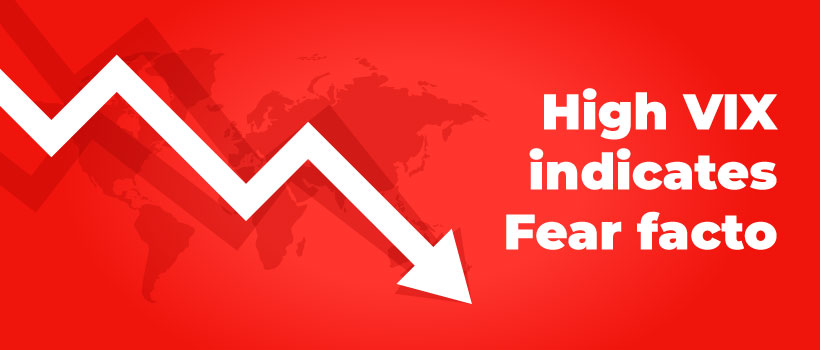What does VIX at 32 levels really mean for Indian stock markets?

In the last few days, the VIX has shot up from a level of 19 to over 32. VIX or volatility index is also called the Fear index as it shows the amount of fear or panic in the market. But let us spend a moment understanding the concept first. The India VIX on the NSE is a barometer of market expectations of near-term volatility. The expectations are calculated based on the volatility implied in the option premiums of strikes surrounding the Nifty levels.
The VIX or the volatility in India has seen sharp spikes in the past. For instance, during the 2019 elections, the VIX was consistently above 40 for a long stretch of time. Similarly, during the COVID crisis, the VIX had gone as high as 66 but that was more an exceptional situation. The normal range for the NSE VIX has been between 13 on the lower side and 32 on the upper side. But that range, VIX at 32 is exactly at the upper end of the tolerance range.
Let us just spend a few minutes understanding how the VIX is calculated. India VIX is computed by NSE based on the order book of NIFTY Options. Here is how it works. The best bid-ask quotes of near and next-month NIFTY options contracts traded on the F&O segment of NSE are utilized for computation of India VIX. Normally, high fear factor overprices the near term options and leads to a rise in the VIX, indicating panic in the market.
The VIX number by itself does not signify anything, what is important is the range and the trend of the VIX. On the current occasion, the recent trend of the VIX has been trending higher and that is the worry. Also, the sharp spikes are a worry. Normally, a high VIX is more a signal of a falling market while a VIX level of around 15-25 is the most conducive for bullish markets. When, VIX is below 15, it is normally indicative of limited downsides in Nifty.
What exactly does VIX at 32 signify. On its own the number does not say much. However, India VIX is the investor’s perception of market volatility in the near term. When we say near term, we are referring to the next 30 calendar days. Higher the India VIX values, higher the expected volatility and vice-versa. VIX in isolation is not an indication of rising market or falling market, but normally markets tend to fall sharply under high volatility.
Let us quickly also look at how this VIX figure can be interpreted from an analytical perspective. Volatility implies the variation in price of a financial instrument. Thus when the markets are highly volatile, market tends to move steeply up or down and during this time volatility index tends to rise. Volatility index declines when the markets become less volatile. Historically, the VIX and the Nifty have been negatively related over time.
That is the reason, the Volatility indices are commonly referred to as the Fear Gauge or the Fear Index because as the volatility index rises, one should become careful. That is what we are seeing in the current context with volatility scaling up to 32 levels. It shows that markets can move steeply in either direction, but the more likely direction is down, unless the VIX tapers. This is an important gauge of risk for market traders and also for long term investors.
- Flat ₹20 Brokerage
- Next-gen Trading
- Advance Charting
- Actionable Ideas
Trending on 5paisa
Disclaimer: Investment in securities market are subject to market risks, read all the related documents carefully before investing. For detailed disclaimer please Click here.

 5paisa Research Team
5paisa Research Team
 5paisa Research Team
5paisa Research Team